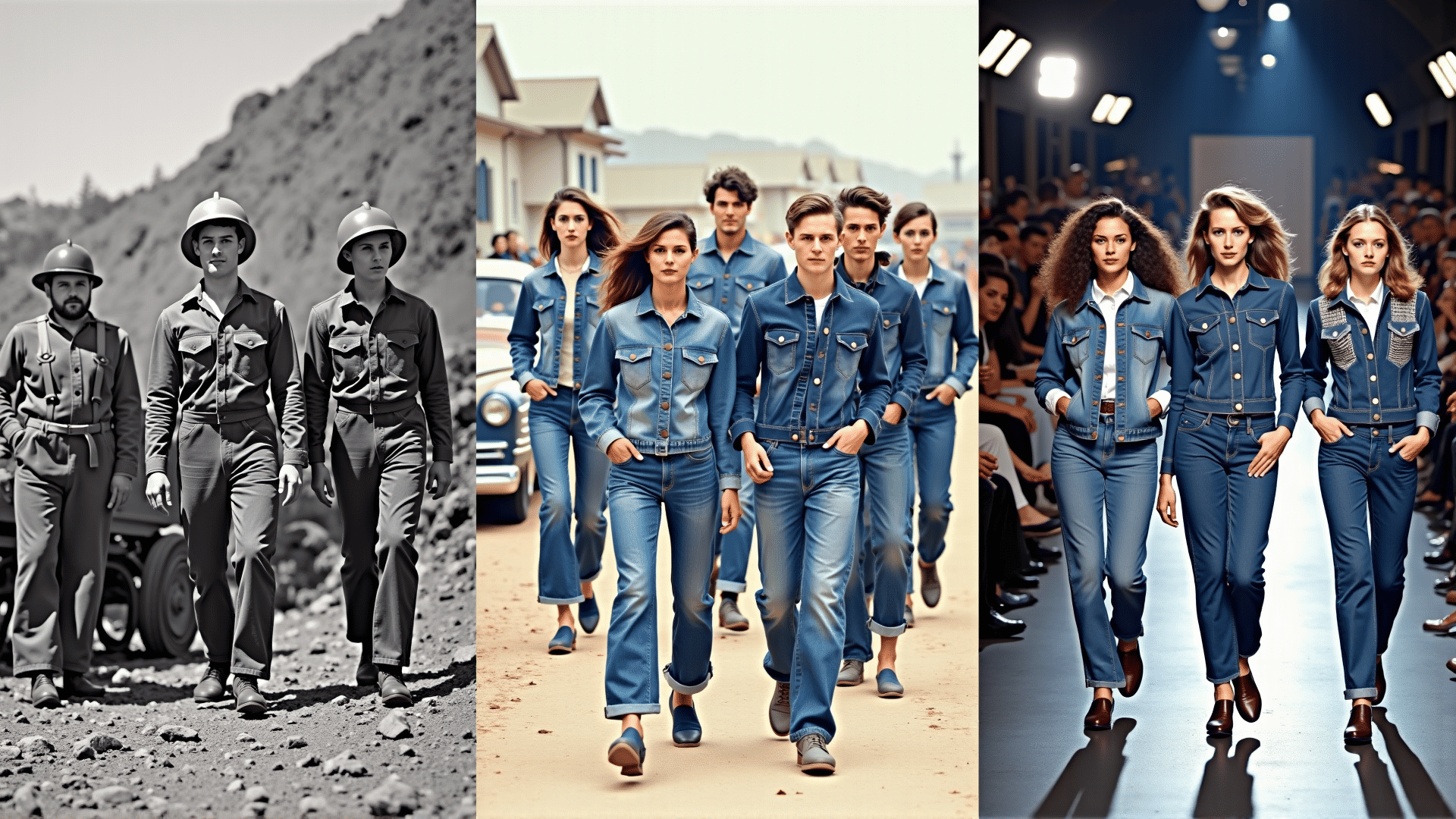Denim, a fabric now celebrated as a cornerstone of style, began its journey in the rugged landscapes of American mining towns. Its origins are deeply rooted in practicality, crafted initially to serve the needs of laborers who required durable clothing that could withstand the harsh conditions of their work environment. This fabric, with its unique weave pattern and indigo dye, was prized for its resilience and longevity.
In the late 1800s, denim gained popularity among gold miners and workers who needed garments capable of enduring the rigors of their daily tasks. The fabric's strength, combined with its comfort, made it an ideal choice for the working class. The quintessential denim garment of this era was the overall, providing full-body coverage and protection. This period marked the beginning of denim's pivotal role in workwear.
As the 20th century progressed, denim began to transition from purely functional to a symbol of rebellion and individuality. The mid-century saw denim being adopted by youth subcultures, some of which used denim as an emblem of defiance against conservative norms. The fabric was embraced by groups ranging from rock 'n' rollers to counterculture movements, each adding their unique twist to denim's evolving story.
The 1960s and 1970s marked a turning point, as denim became synonymous with fashion innovation. Designers began experimenting with cuts, colors, and embellishments, transforming denim from utilitarian to avant-garde. The fabric's adaptability meant it could be tailored into a myriad of styles, from bell-bottoms to jackets, each reflecting the diversity and creativity of the era.
As fashion entered the late 20th century, denim solidified its place on runways globally. High fashion designers began incorporating denim into their collections, blurring the lines between luxury and everyday wear. The versatility of denim allowed for creative expressions that resonated with a wide range of audiences, making it a staple in wardrobes across the globe.
Today, denim continues to evolve, embracing technological advancements and sustainable practices. Innovations in fabric development have introduced stretch denim, allowing for a more tailored fit while maintaining comfort. Additionally, with growing environmental consciousness, many denim producers are adopting eco-friendly practices to reduce the industry's impact on the planet.
The journey of denim from workwear to fashion statement is a testament to its adaptability and enduring appeal. What began as a practical choice for laborers has transformed into a symbol of style that transcends cultural and social barriers. With each new iteration, denim continues to capture the imagination of designers and wearers alike, solidifying its place as a timeless fabric that will undoubtedly continue to evolve with future generations.
